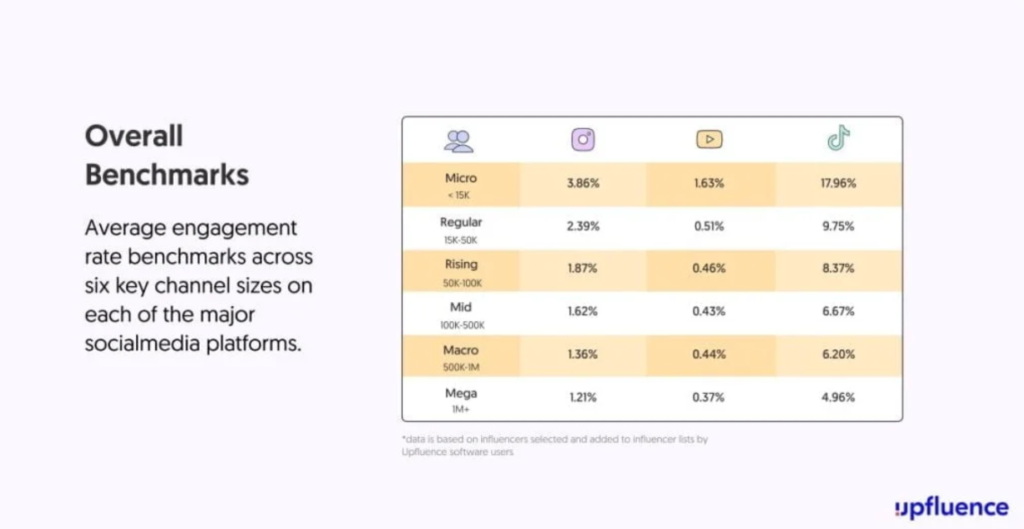~ Exploring the recent shift in digital marketing strategies towards smaller social media influencers ~
Brands of all sizes are increasingly turning their attention from mega-influencers with massive social media followings to micro-influencers, whose smaller but highly engaged audience offers unique advantages.
This strategic pivot is reshaping how companies approach influencer marketing, striving for authentic engagement, and promoting trust in ways that massive influencers cannot provide. This blog will delve into the reasoning behind the clear shift in todays digital ecosystem.

UNDERSTANDING THE PHENOMENON
Micro-influencers are individuals with a following in the range of 10,000 to 100,000 on social media platforms.
Influencer Categories
- Nano-influencers: 1K–10K followers
- Micro-influencers: 10K–100K followers
- Macro-influencers: 100K–1M followers
- Mega or celebrity influencers: 1M+ followers
Micro influencers cater to a far more niche audience then their more famous counterparts which is often characterised by a high level of engagement and trust.
Their followers view them as peers or knowledgeable friends, making their recommendations highly valued and impactful.
The Authenticity factor
One of the key reasons for the shift towards micro-influencers is the unmatched authenticity they bring to the table. In an online world that is overflowing with ads and sponsored content, authenticity stands out.
Micro-influencers tend to have a personal connection with their audience, share their genuine experiences, and engage in meaningful interactions.
This authenticity translates into higher trust and credibility, making their endorsements more effective than the over-commercialised promotions by larger influencers.
Niche targeting = higher engagement
It is common that a micro influencers social media pages are centred around a specific niche whether it’s fitness, fashion, beauty or technology. This specialisation allows companies to target their marketing budgets more precisely, reaching an audience that is inherently interested in their product or service.

As we can see by this study done by Upluences, focused targeting leads to significantly higher engagement rates compared to campaigns run with broader audiences. The followers of micro-influencers are more likely to take action, be it through likes, shares, comments, or purchases, due to the relevant and resonant content.
cost effectiveness
Another compelling reason for the surge in micro-influencer partnerships is cost-effectiveness. Hiring a massive influencer requires huge marketing budgets, making it a high-stakes gamble if the campaign doesn’t yield the expected ROI.
Conversely, micro-influencers are more affordable, allowing brands to collaborate with multiple influencers simultaneously, diversifying their approach, and reaching different segments of their target audience without breaking the bank.
Check out the average cost of a post on different social media platforms for a micro influencer below
Micro-Influencer Rates
Instagram: $100–$500/post
https://influencermarketinghub.com/influencer-rate
YouTube: $200–$1,000/video
TikTok: $25–$125/video
Twitter: $20–$100/Tweet
Facebook: $250–$1,250/post
building communities and loyalty
Micro-influencers excel at building communities around their passions. Companies are able to tap into these communities where loyalty and interest is already present when they work with these influencers.

This strategy not only expands the brand’s audience but also strengthens its reputation and brand image as a advocate for the communities values and interests. This may eventually result in a rise in brand loyalty and a closer, more intimate bond with potential customers.
The Tiktok revolution
Tiktok has accelerated the shift toward micro-influencer marketing and has propelled the trend to unprecedented heights. The platform has a distinct algorithm that prioritises engagement in content over the influencers follower count, making it an ideal environment for those with a smaller communities.
Tiktok’s short video format has allowed micro-influencers to showcase their authenticity and creativity in a way that is easily digestible while still remaining entertaining. This has led to the rapid rise of niche content creators who can command the attention of highly engaged audiences, even with a relatively small follower base.
Brands are taking notice, leveraging TikTok’s dynamic environment to execute viral marketing campaigns that feel more organic and less intrusive. The impact that the platform can have extends far beyond an increasing in visibility. It has fundamentally shifted the way brands think about engagement, creativity, and the power of micro-influencer partnerships in crafting relatable and compelling narratives.
challenges and considerations
Despite the evident benefits, working with micro-influencers requires a nuanced approach. Finding the right influencers who align with your brand’s values and audience is not only difficult but very time consuming.
Unlike working with one major influencer, managing multiple micro-influencer relationship demands extra resources and a strategic framework to ensure consistency in how the brand is being potrayed.
In order to grasp the full power of micro-influencers effectively, companies should focus on building long-term relationships rather than one-off campaigns, trying to gain the trust of the community that the micro influencer has already built.
Additionally, clear communication of expectations and creative freedom is key to fostering a productive partnership that resonates with the target audience.
the future of influencer marketing
As the digital landscape continues to evolve, the role of micro-influencers is set to grow. Their ability to cut through the noise, engage niche audiences, and offer authentic and trusted voices makes them an invaluable asset in the digital marketing toolkit.
Companies that understand and harness the power of micro-influencers can expect to achieve deeper engagement, greater trust, and ultimately, a stronger connection with their target audience.
Check out what Forbes had to say about the future of Influencer marketing:
conclusion
This shift from major celebrities to micro-influencers marks a strategic evolution in influencer marketing, highlighting the importance of quality over quantity when it comes to engagement and following. In an ecosystem where trust and authenticity are the key to success, micro-influencers are offering brands a way to connect to their desired audience on a personal level.
Therefore as we move into the future, the brands that are able to acknowledge and capitalise on the unique value that micro-influencers can bring to the table will thrive.

Leave a Reply
You must be logged in to post a comment.